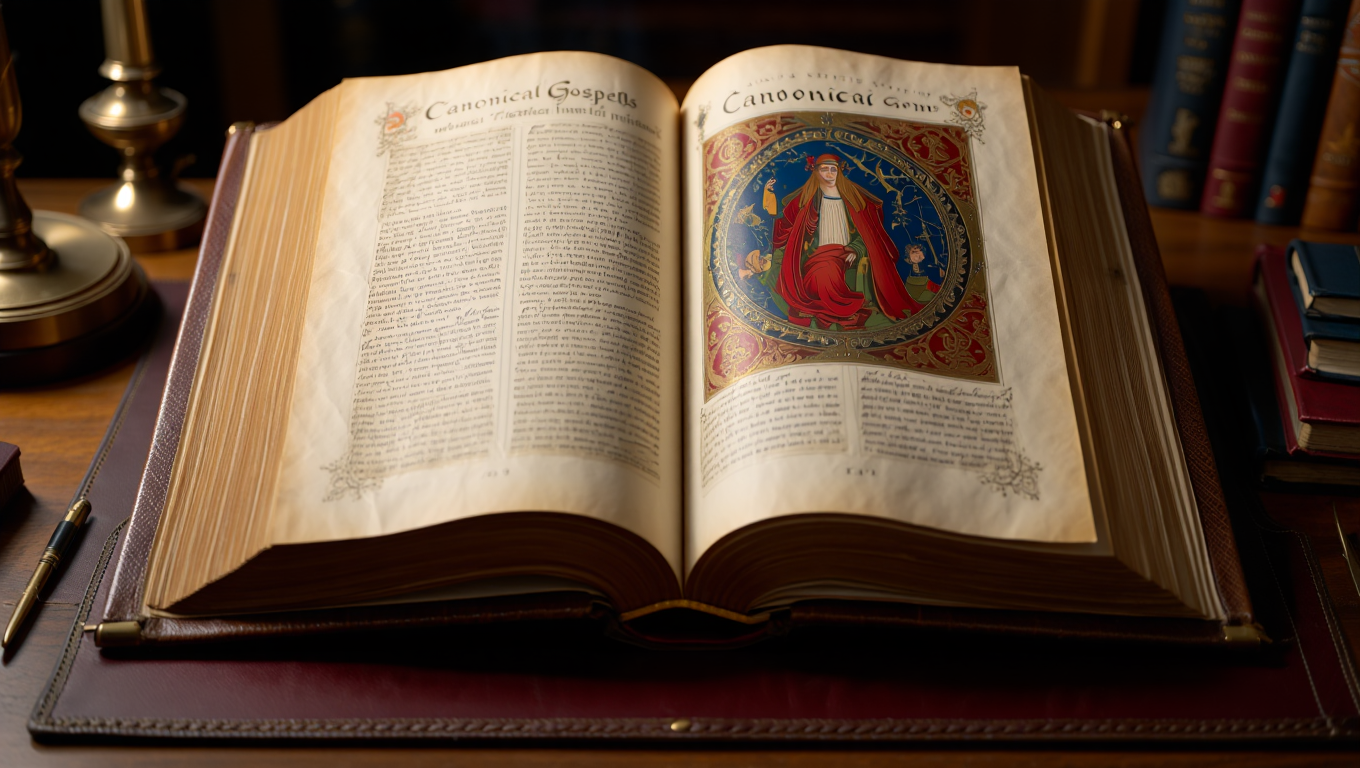The Bible and the Book of Mormon are two significant religious texts that have shaped the beliefs and practices of millions of people worldwide. While they share some similarities, there are also notable differences that distinguish them from each other. In this article, we will delve into the origins, teachings, and unique characteristics of the Bible and the Book of Mormon to shed light on their contrasting nature.
Key Takeaways:
- The Bible and the Book of Mormon have differing origins and authors.
- Archaeological evidence supports the historical accuracy of the Bible, while the Book of Mormon lacks such verification.
- The Bible is widely accepted as a canonical text, while the Book of Mormon has not been integrated into the biblical canon.
- Teachings in the Bible and the Book of Mormon differ, notably in their portrayal of Jesus and the requirements for salvation.
- An understanding of the differences between the Bible and the Book of Mormon is crucial for making informed theological decisions.
Authors and Origins
The Bible and the Book of Mormon have distinct differences in terms of their authors and origins. The Bible, composed over a span of fifteen hundred years, is a compilation of texts written by multiple authors. These authors include prophets, kings, and disciples who recorded their experiences and encounters with God. The Book of Mormon, on the other hand, is attributed solely to Joseph Smith, who claimed to have translated ancient texts from gold plates.
One key difference between the two is the level of credibility attributed to their authors. The Bible, being written by various individuals who lived during different periods, carries the weight of eyewitness accounts and multiple historical perspectives. This adds to its reliability as a historical document. However, the Book of Mormon’s authorship solely by Joseph Smith raises questions among critics regarding its authenticity and translation process.
While the authors of the Bible are widely accepted, the lack of concrete evidence supporting the Book of Mormon’s origin and translation has led to skepticism. This is further highlighted by the absence of archeological findings that align with the events and characters mentioned in the Book of Mormon. These differences in authors and origins contribute to the contrasting perceptions of the Bible and the Book of Mormon among believers and scholars alike.
Table: Authors and Origins
| Bible | Book of Mormon |
|---|---|
| Written by multiple authors over fifteen hundred years. | Attributed to Joseph Smith. |
| Authors include prophets, kings, and disciples. | Solely authored by Joseph Smith. |
| Eye-witness accounts and multiple historical perspectives. | Lacks concrete evidence and translation process questioned by critics. |
Difference Between Bible and Book of Mormon: Exploring Origins, Teachings, and Unique Characteristics
Historical Evidence
When comparing the Bible and the Book of Mormon, one significant difference lies in the availability of historical evidence to support their respective claims. The Bible, with its rich tapestry of accounts spanning thousands of years, has garnered substantial archaeological support. Names of kings, cities, and festivals mentioned in the Bible have been discovered through archaeological excavations, providing tangible evidence of its historical accuracy.
In contrast, the Book of Mormon lacks such archaeological evidence. Despite its claims of ancient origins and its depiction of civilizations in the Americas, no cities or individuals mentioned in the Book of Mormon have been validated by archaeologists. The lack of tangible evidence has raised questions and skepticism among critics, leading the Smithsonian Institute to state that there is no direct connection between the Book of Mormon and New World archaeology.
“Archaeological evidence supports many aspects of the Bible, but no such evidence has been found for the Book of Mormon.” – Smithsonian Institute
This disparity in archaeological evidence highlights a key distinction between the two texts, prompting further examination into their veracity and origins.
| Comparison of Historical Evidence | Bible | Book of Mormon |
|---|---|---|
| Archaeological support | Abundant evidence including names of kings, cities, and festivals | Lacks archaeological evidence and no validating discoveries |
| Verifiability | Supported by archaeological findings | Not supported by archaeological findings |
| Scholarly consensus | Accepted as a historical document by scholars | Subject to skepticism and criticism by scholars |
Examining the contrasting historical evidence between the Bible and the Book of Mormon raises important questions about the origins and validity of these religious texts. While the Bible has received archaeological support for many of its claims, the Book of Mormon lacks tangible evidence to substantiate its historical accuracy.
Difference Between Bible and Book of Mormon: Exploring Origins, Teachings, and Unique Characteristics
Publication and Canonization
When examining the difference between the Bible and the Book of Mormon, one significant contrast is in their publication and canonization processes. The Bible, accepted as a canonical text by the early church, underwent a thorough evaluation due to its eyewitness accounts, lack of historical errors, and alignment with other recognized scriptures. It was meticulously scrutinized over time before being integrated into the biblical canon.
In contrast, the Book of Mormon was published within a relatively short period of time without the same level of historical and theological scrutiny. Joseph Smith claimed to have translated the ancient texts, but this process has been questioned by critics. This lack of scrutiny and the swift publication of the Book of Mormon distinguishes it from the Bible in terms of its acceptance and canonical status.
| Bible | Book of Mormon |
|---|---|
| Accepted as a canonical text by the early church | Not integrated into the biblical canon |
| Eyewitness accounts, lack of historical errors | Published without the same level of scrutiny |
| Accepted over time, after evaluation | Swift publication, lacking thorough examination |
Table: Comparison of Bible and Book of Mormon in terms of Publication and Canonization
The contrasting processes of publication and canonization underscore the distinct historical journeys of the Bible and the Book of Mormon, adding to the differences in their origins and overall reliability.
Teachings and Doctrine
The teachings and doctrine found in the Bible and the Book of Mormon differ significantly, particularly in regard to the nature of Jesus and the requirements for salvation. These differences play a crucial role in shaping the beliefs and practices of their respective followers.
“For God so loved the world that he gave his one and only Son, that whoever believes in him shall not perish but have eternal life.” – John 3:16 (Bible)
“And we talk of Christ, we rejoice in Christ, we preach of Christ, we prophesy of Christ, and we write according to our prophecies, that our children may know to what source they may look for a remission of their sins.” – 2 Nephi 25:26 (Book of Mormon)
In the Bible, Jesus is portrayed as God incarnate and an essential part of the Trinity, emphasizing salvation through faith in Christ alone. However, the Book of Mormon presents Jesus as a created being and does not support the traditional Christian doctrine of the Trinity. It teaches that salvation requires not only faith in Jesus but also adherence to specific rituals and obedience to certain teachings.
These contrasting views on the nature of Jesus and the path to salvation have significant implications for followers of the Bible and the Book of Mormon. Understanding these differences is essential in order to make informed theological decisions and shape personal beliefs.
| Bible Teachings | Book of Mormon Teachings | |
|---|---|---|
| Jesus | God incarnate, part of the Trinity | Created being |
| Salvation | Through faith in Jesus alone | Through faith in Jesus and adherence to specific rituals and teachings |
Table: Comparing Bible and Book of Mormon Teachings
Conclusion on Bible and Book of Mormon Differences: A Summary
After exploring the origins, teachings, and unique characteristics of the Bible and the Book of Mormon, it is clear that these two religious texts have significant differences. From their authors and historical evidence to their publication and teachings, each presents a distinct perspective.
The Bible, compiled over a span of fifteen hundred years, boasts multiple authors and claims divine authorship. Supported by archaeological evidence, it is considered by many to be a reliable collection of historical documents. On the other hand, the Book of Mormon, attributed solely to Joseph Smith, claims to be a translation of ancient texts. However, it lacks archeological evidence and its translation process has been questioned by critics.
Moreover, the historical accuracy of the Bible is affirmed by archaeological discoveries that validate its accounts of kings, cities, and festivals. In contrast, the Book of Mormon lacks archaeological support, with no cities or people mentioned in the text ever being found. The Smithsonian Institute has even stated that there is no direct connection between the Book of Mormon and New World archaeology.
In terms of publication and canonization, the Bible has been embraced as a canonical text by the early church due to its eyewitness accounts, lack of historical errors, and alignment with other recognized scriptures. Conversely, the Book of Mormon has not been integrated into the biblical canon and was published without the same level of historical and theological scrutiny.
Lastly, the teachings and doctrine of the Bible and the Book of Mormon diverge significantly. The Bible presents Jesus as God incarnate and a part of the Trinity, while the Book of Mormon portrays Jesus as a created being and denies the doctrine of the Trinity. Additionally, the Bible teaches salvation through faith in Christ alone, while the Book of Mormon adds additional requirements such as specific rituals and obedience to certain teachings for salvation.
In conclusion, understanding the differences between the Bible and the Book of Mormon is essential for making informed theological decisions. While the Bible is supported by archaeological evidence, historical accuracy, and a long-established canon, the Book of Mormon lacks such verification and presents teachings that diverge from traditional Christian beliefs. It is up to individuals to weigh these differences and determine their own faith journey.
FAQ
What is the difference between the Bible and the Book of Mormon?
The Bible is a collection of historical documents written down by eyewitnesses during the lifetime of other eyewitnesses, while the Book of Mormon is attributed to Joseph Smith and claims to be a translation of ancient texts with teachings that differ from traditional Christian beliefs.
Is there archaeological evidence to support the Bible?
Yes, the Bible is supported by archaeological evidence, including names of kings, cities, and festivals. In contrast, the Book of Mormon lacks archaeological evidence to support its historical claims, and no cities or people mentioned in the Book of Mormon have been discovered.
Why is the Bible accepted as a canonical text?
The Bible has been accepted as a canonical text by the early church due to its eyewitness accounts, lack of historical errors, and alignment with other recognized scriptures. The Book of Mormon, however, has not been integrated into the biblical canon and was published within a short period of time without the same level of historical and theological scrutiny.
How do the teachings of the Bible and the Book of Mormon differ?
The Bible teaches that Jesus is God incarnate and a part of the Trinity, while the Book of Mormon portrays Jesus as a created being and denies the doctrine of the Trinity. Additionally, the Bible teaches salvation through faith in Christ alone, while the Book of Mormon includes additional requirements such as specific rituals and obedience to certain teachings for salvation.
What are the key differences between the Bible and the Book of Mormon?
The Bible and the Book of Mormon differ in their authors, origins, historical evidence, publication, and teachings. While the Bible is supported by archaeological evidence and historical accuracy, the Book of Mormon lacks such verification. The teachings in the Bible and Book of Mormon also differ, particularly in their views on the nature of Jesus and the requirements for salvation.
 Skip to main content
Skip to main content


